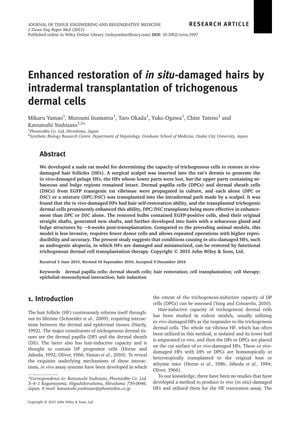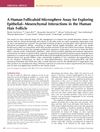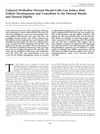Enhanced Restoration of In Situ-Damaged Hairs by Intradermal Transplantation of Trichogenous Dermal Cells
February 2015
in “
Journal of Tissue Engineering and Regenerative Medicine
”

TLDR Transplanting a mix of specific skin cells can significantly improve the repair of damaged hair follicles.
This study demonstrated that intradermal transplantation of a mixture of dermal papilla cells (DPCs) and dermal sheath cells (DSCs) significantly enhances the restoration of in situ-damaged hair follicles (HFs) in a nude rat model. The research involved 137 hair follicles in the DPC/DSC group and 27 in the control group, showing that the average chimerism in the dermal papilla was about 86%, which was significantly higher than the dermal sheath's 23%. The average hair bulb size in the DPC/DSC group was also larger compared to the control group. The study concluded that while damaged HFs could spontaneously restore without donor cells, they did not grow to the size of intact HFs. The growth of restored HFs correlated with the extent of DSC chimerism, suggesting that the transplantation of these cells could be a potential clinical therapy for conditions like androgenetic alopecia.





